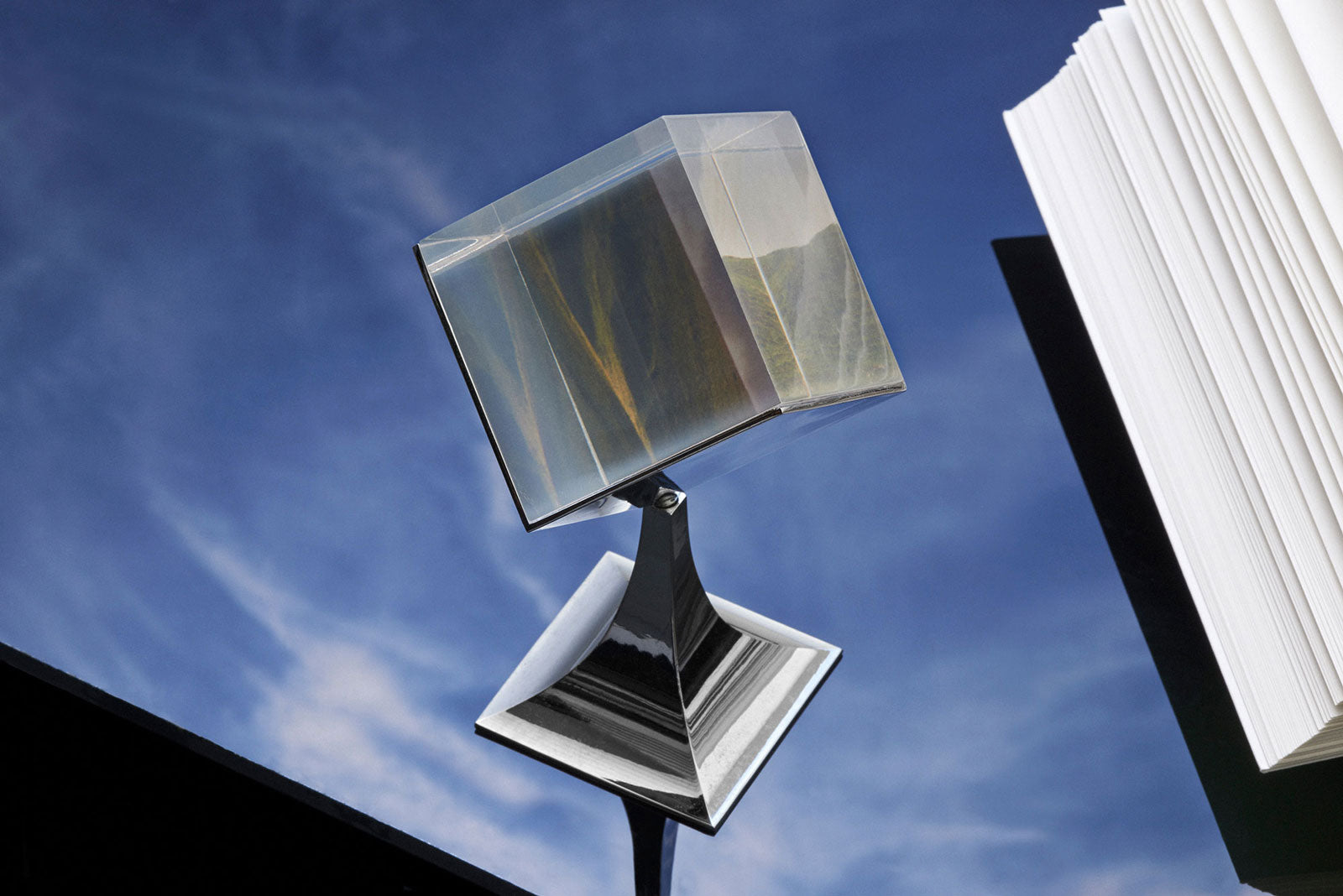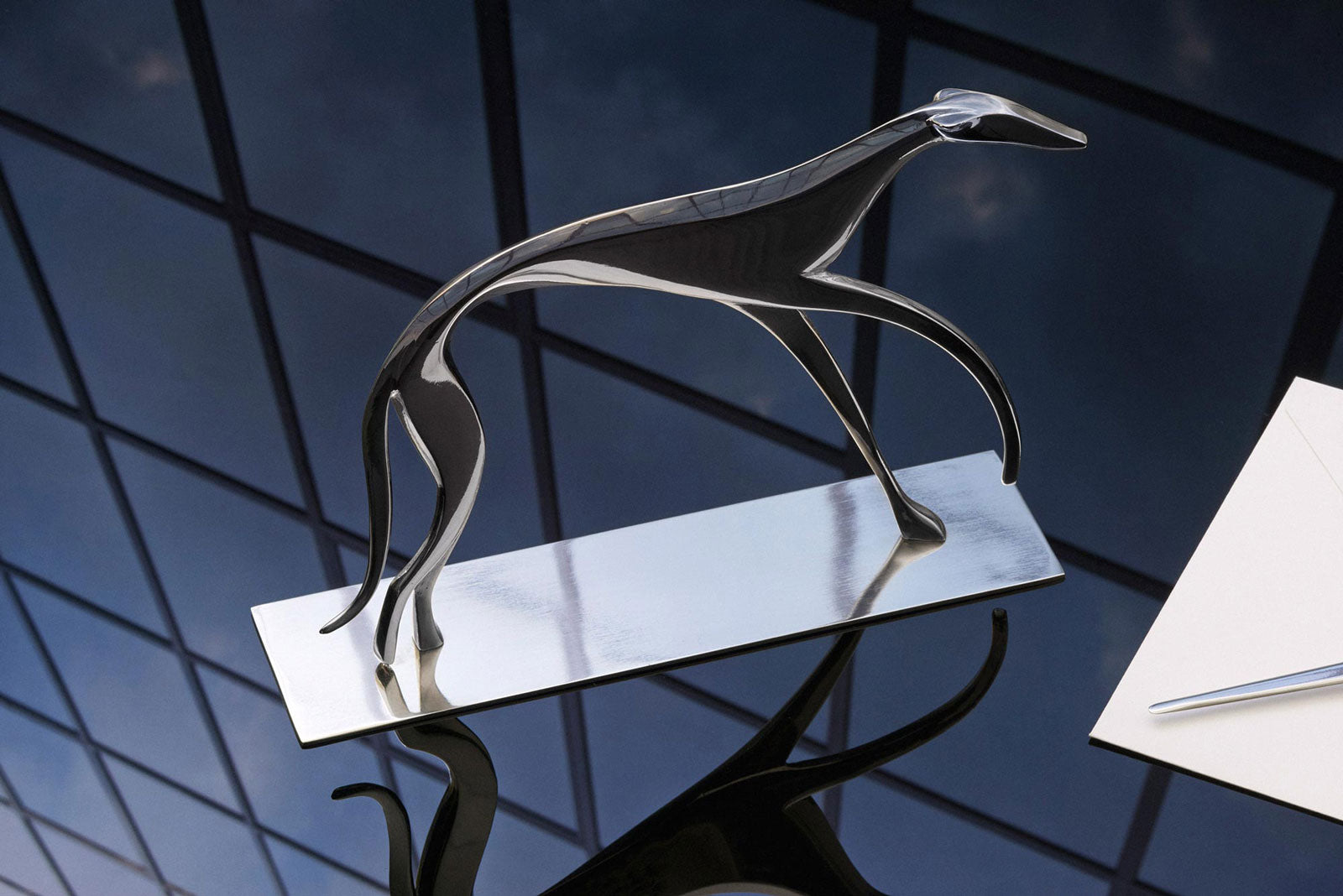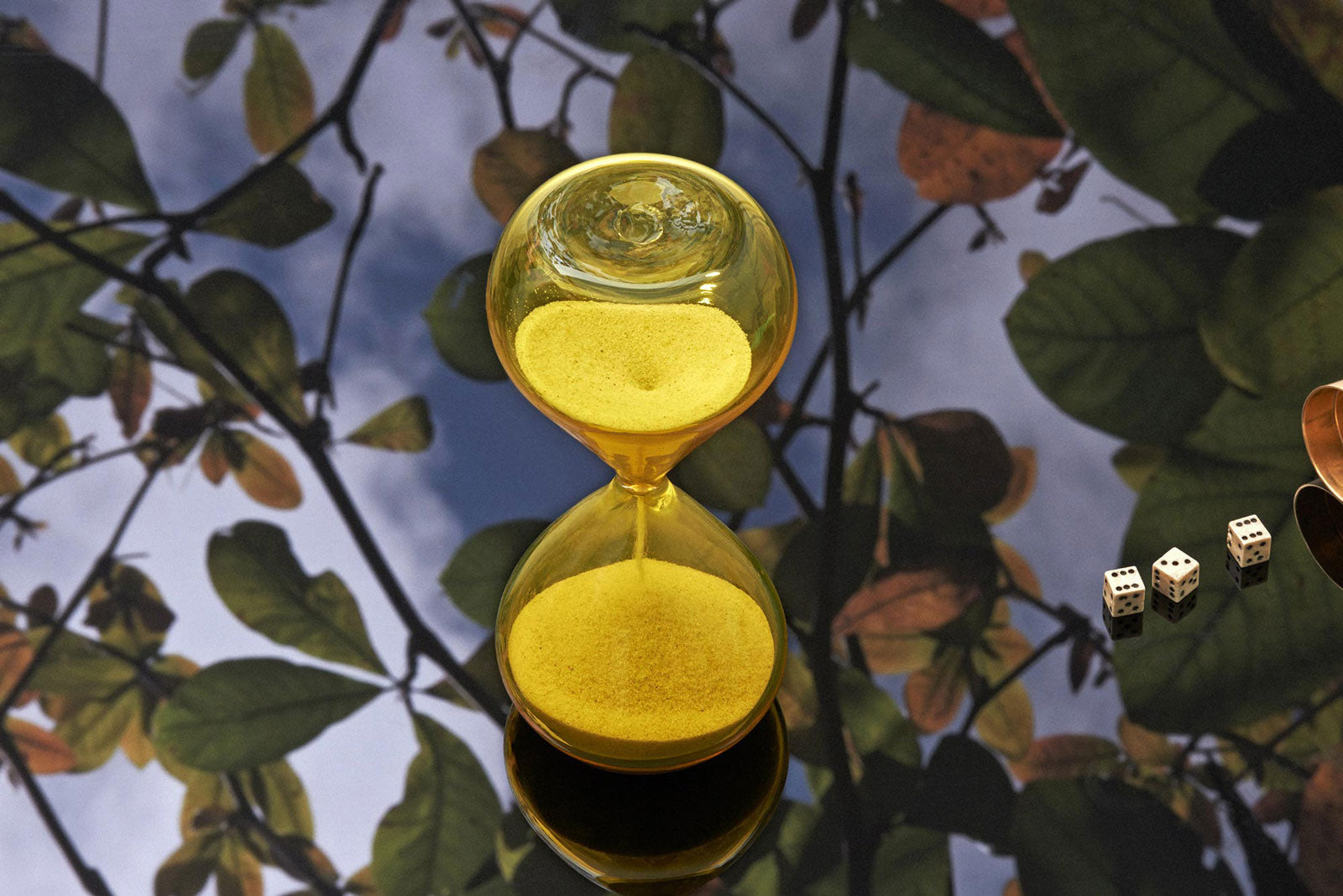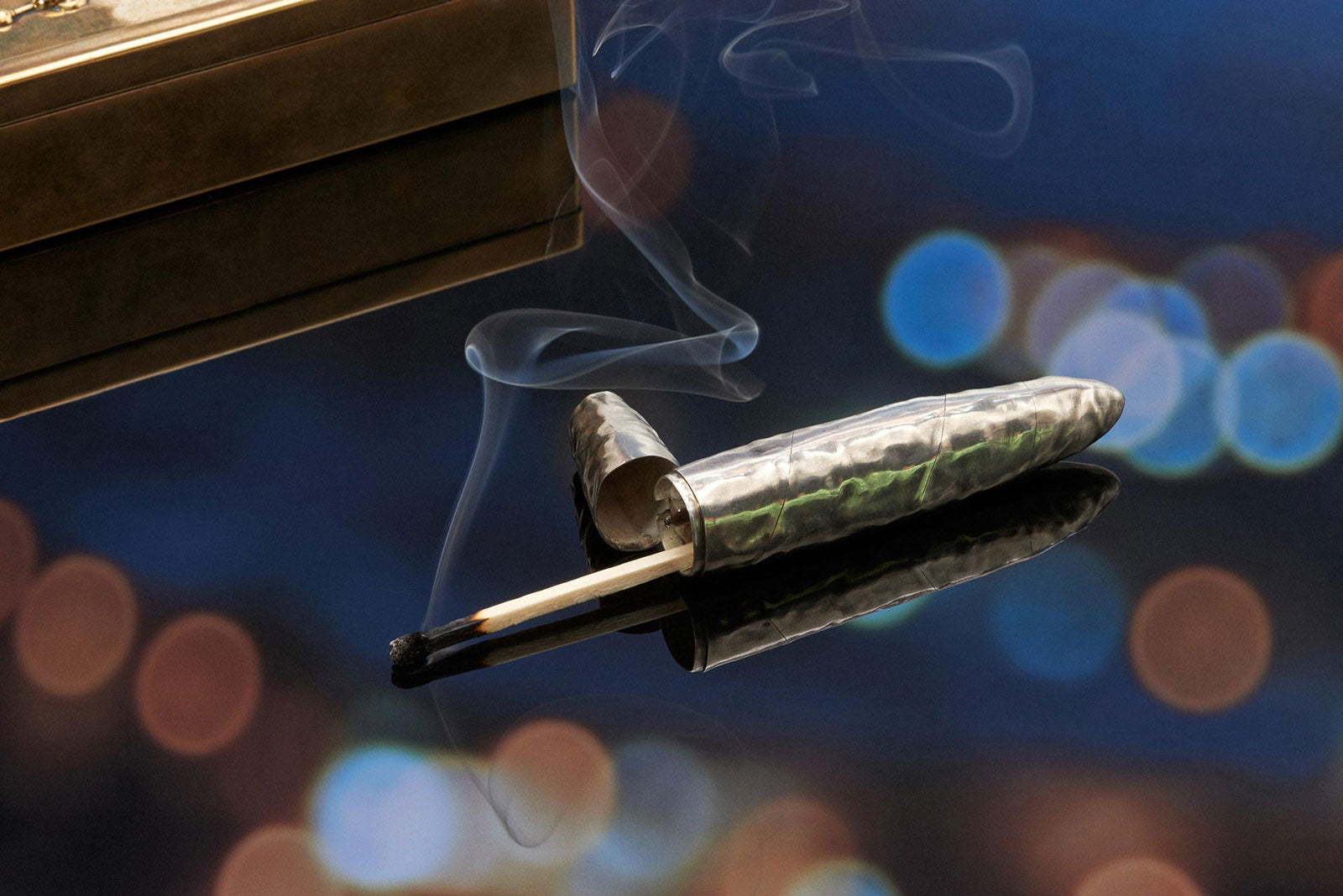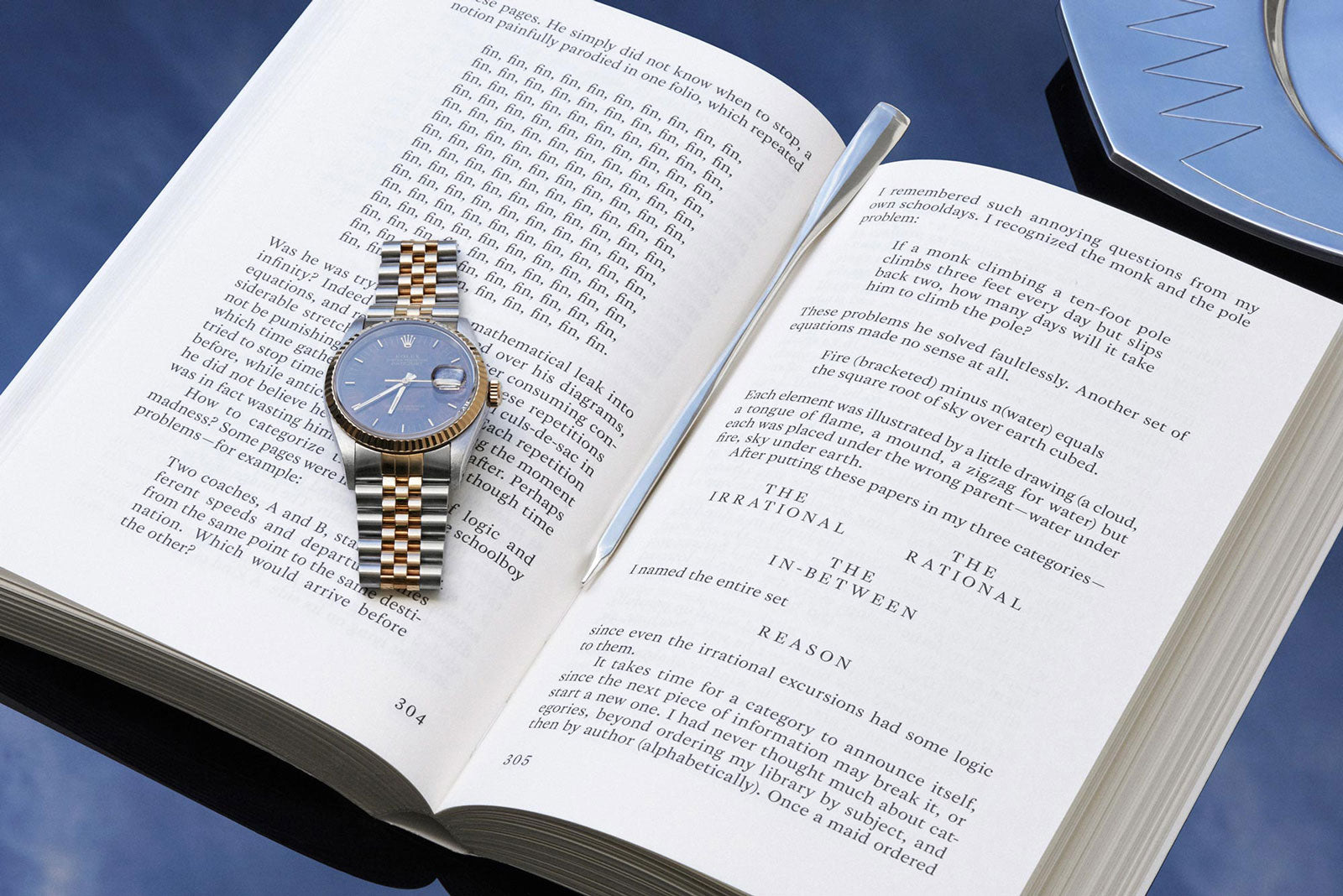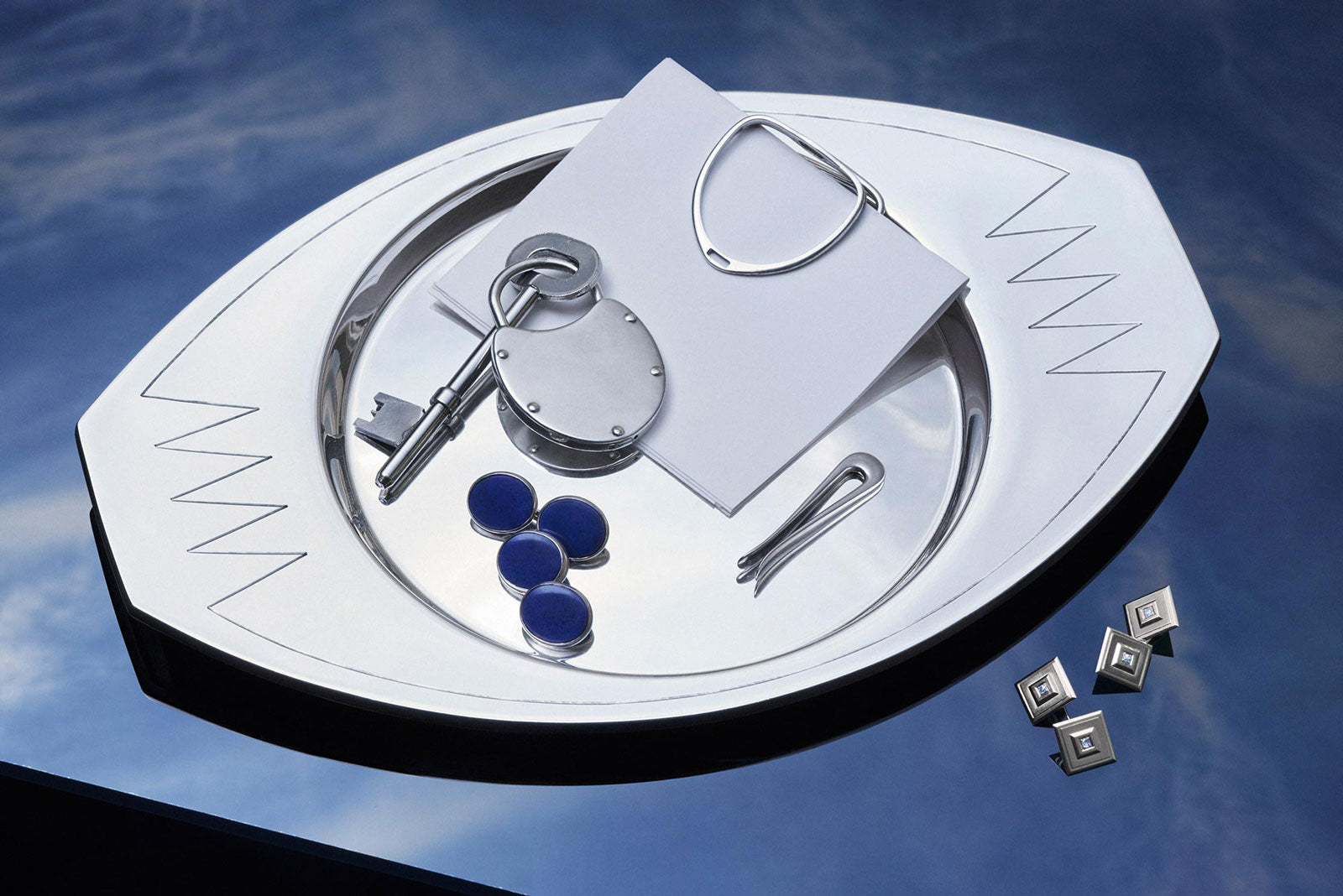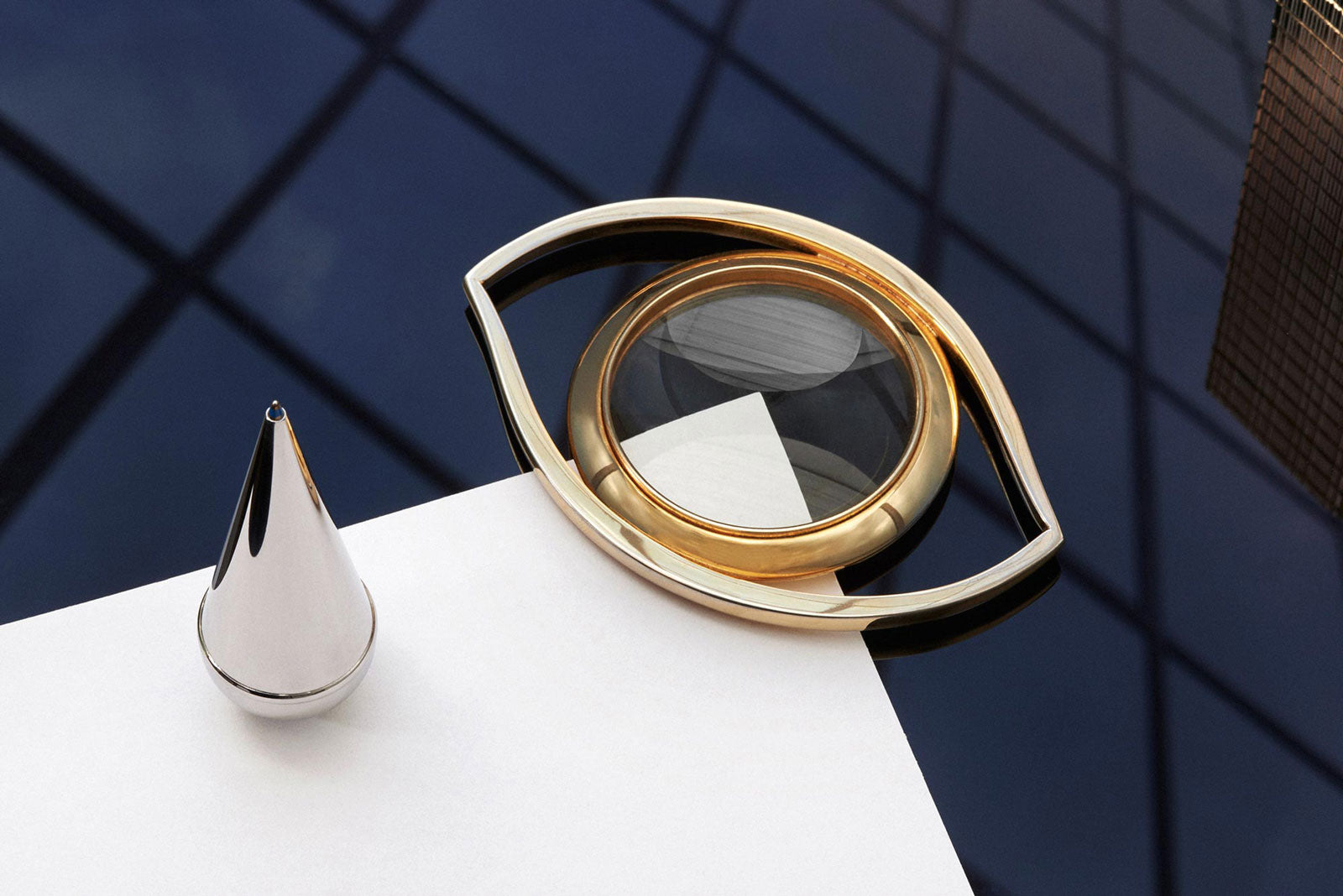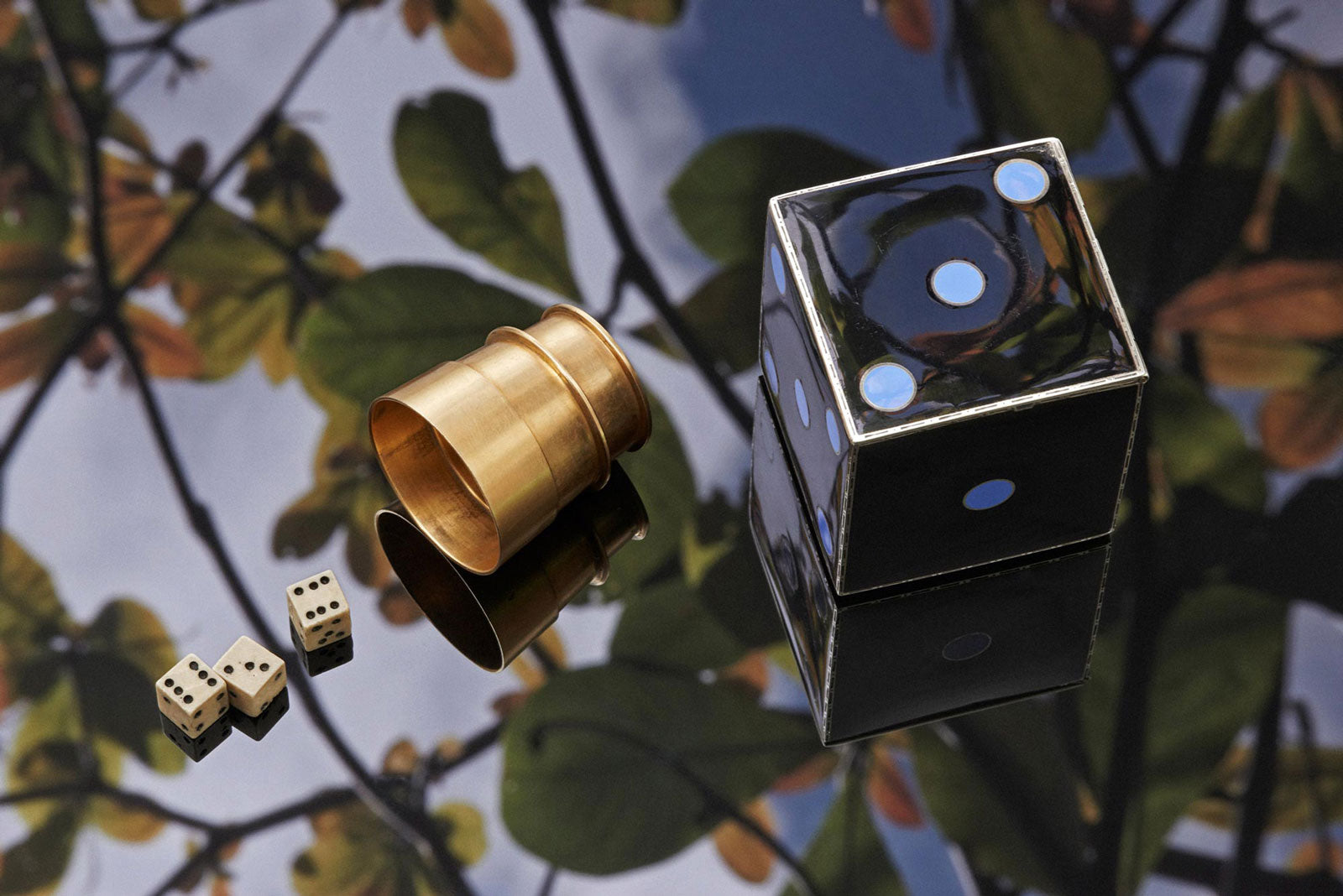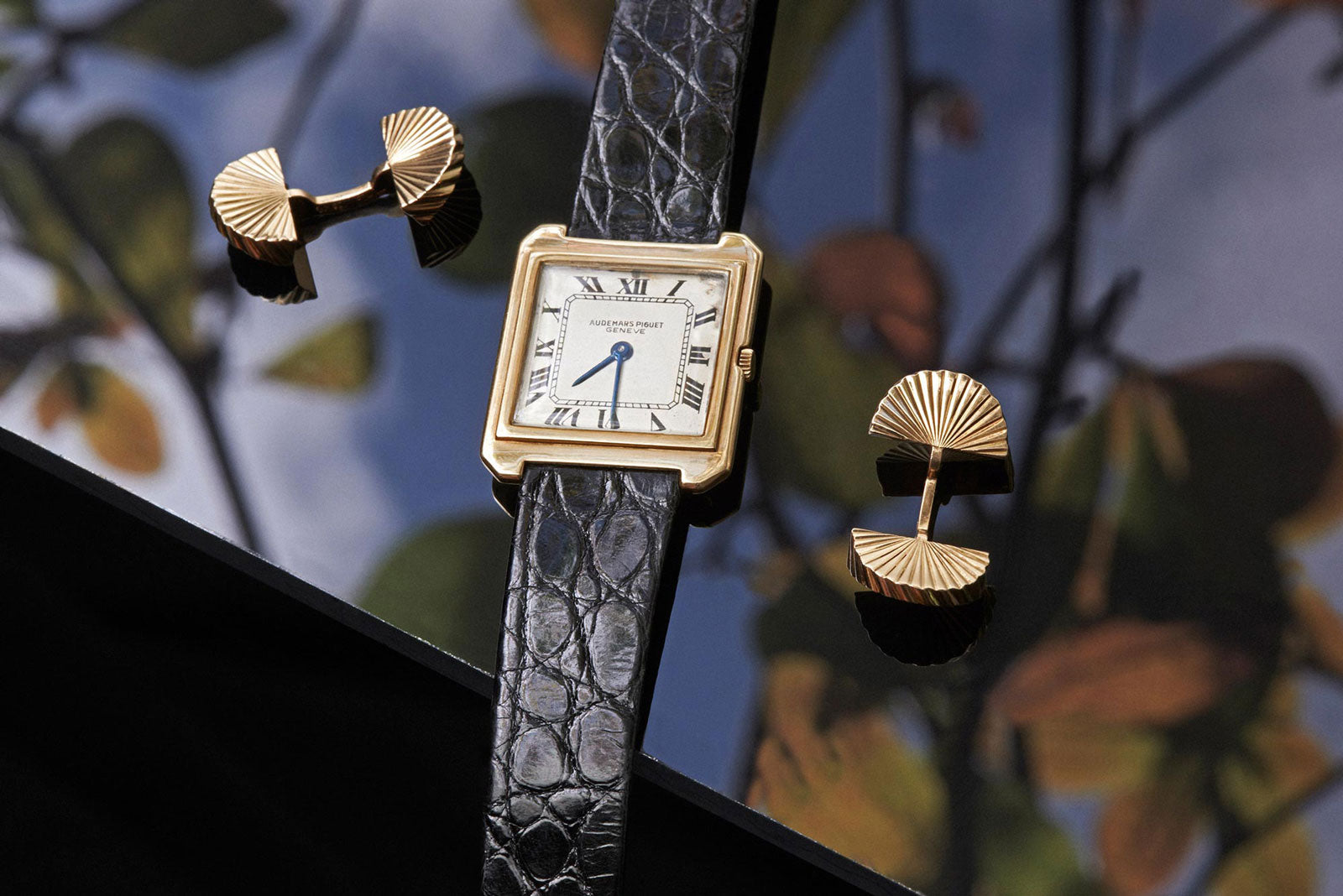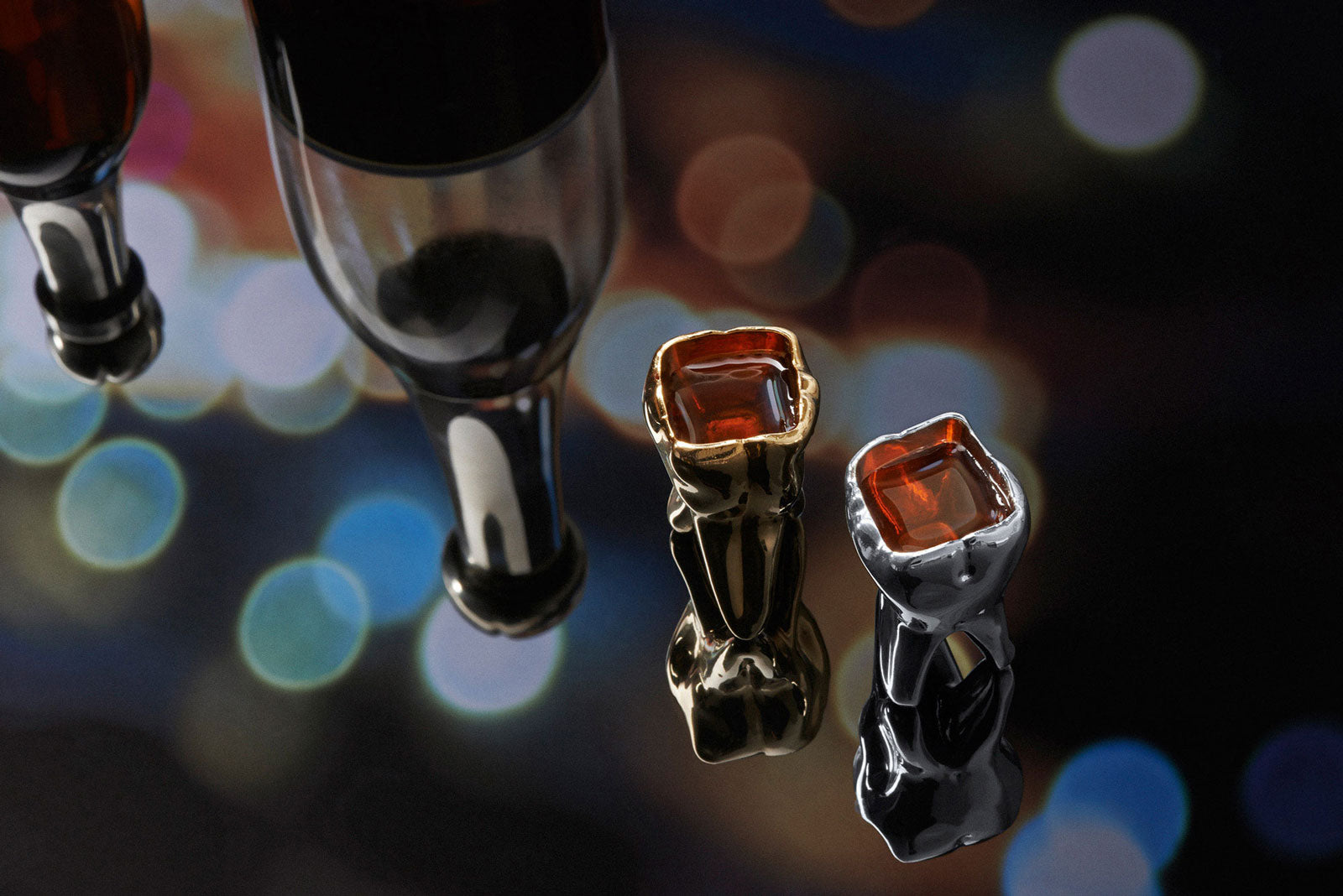‘Morning’
What emerged was precisely what he expected to find: a reflection of memory images. Contemplating his face in the photo frame he waited.
1960s lucite and chrome 3 image photo frame
By the steady hands of his watch, he listened to time. Every day for the past sixteen days he saw her. Silver lingered in the crease of
an open book.
Rolex burlwood dial, Jubilee bracelet Miniature
oar English university trophy, sterling silver.
So absorbed in his thoughts
he hardly saw the platinum catch-all, the key, or the revelation locked inside those lapis lazuli cufflinks tossed unmistakably in cold blue.
Hans Hanson catch-all. Mid-century, Danish sterling silver. Stirrup money clip, by Hermès. Padlock keyring, sterling silver " Tie bar-slide " Round lapis lazuli cufflinks" Square cufflinks, two tone rose and yellow gold, diamond."
Only by whirling on his heel could he hope to comprehend
the panorama.
Shoe horn, circa 1930. American sterling silver
Above the mantle was
displayed an Austrian hound
of impeccable integrity.
Hagenauer sculpture, 1930
His gaze fell on the letter opener. By accident she had learnt more about his life from the contents of that letter than anywhere.
Dunhill letter opener with lighter top, circa 1950
Cleopatra’s eye reflected
the sun. Through the hypnotism
of precious metals there
emerged a dark slender shadow.
Cleopatra’s eye magnifying glass. Mid-century, gold plated
Hermès weighted pen. Silver plated.
A lighter presented itself, smooth to the touch
it gave the impression of
intelligent company.
Table lighter St Dupont, circa 1960. Gold plate
“I should explain why I spend so much time here”, said the silhouette. Leaves moved like shadows across her eyes.
Hermès rope bottle opener. Plated silver.
It’s not too late to turn back. Time moved with faint sounds.
Venini hourglass. Hand-blown lurid Murano glass.
He unscrewed the telescopic cup, rolled and remained still. Black eyes on the dice prophesied a new cycle.
Telescopic cup, J. E. Cauldwell. Gold plated. Dice,
Cartier for America. Vitreous enamel glass, silver
Staring down at the varnished surface her mouth worried him while her eyes examined the gold cufflink.
Audemar Piguet evening watch. gold plated, Roman dial, alligator strap
Pale graceful hands placed
the gold stud box delicately
on the table.
Men’s Edwardian jewellery box, 1910. Gold plated.
Mid-century British cigar ashtray. Sterling silver and crystal.
He lit a match to make sure the watch had really stopped. Smoke lingered from its vesta case.
Realist wrapped tobacco leaf march vesta. Silver.
As the travel clock neared
one the figure vanished into dappled shadows.
Art Deco Jaeger LeCoultre travel clock.
Gold and silver plated. Retailed by Aspray.
On the newly varnished table two bronze shot cups sat alive like in a dream.
Tooth shot cup by Foundwell. Bronze and silver plated.
Set of 4, 3 silver 1 gold. Heath & Midleton champagne decanters circa 1900.
Sterling silver and glass.
‘A DAY OBSERVED’
A story by FOUNDWELL
Photography Matthieu Lavanchy, creative direction OK-RM,
notes by Kate O’Brien and objects selected by Alan Bedwell

